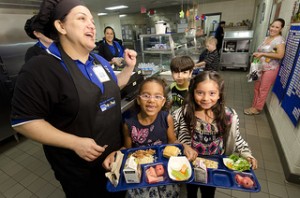 Restaurant management during tough economic times is challenging. Every customer is likely to be more critical of the food service establishment where hard-earned discretionary income is being spent. The staff is probably stressed about losing their job and/or they may be working more hours or jobs to overcome financial shortages. The owners are may be financially hypercritical. Finally, the suppliers could be less willing to offer discounts.
Restaurant management during tough economic times is challenging. Every customer is likely to be more critical of the food service establishment where hard-earned discretionary income is being spent. The staff is probably stressed about losing their job and/or they may be working more hours or jobs to overcome financial shortages. The owners are may be financially hypercritical. Finally, the suppliers could be less willing to offer discounts.
However, anyone who has been in the food service business is painfully aware that nothing ever easy for the administration of an eating establishment, even in the best of times. Consider saying, “I better put in some additional overtime this week,” when 65 hours is already your normal workweek. This concept basically defines restaurant management parameters. Accomplished restaurant managers are essentially married to the place, unless they have become enlightened to alternative methods of restaurant management. This can be accomplished by training in a manner that “transforms good intentions into great performance”. By educating in a way that says all employees are honest, dedicated and highly respected, the workload is evenly distributed and success assured.
What Else Besides Location, Location, Location?
If there was a restaurant management bible hidden in a pyramid or vault, it must have stated: “Rule #1: location, location, location.” Making that statement surely comes through experiences over a long period of time. That is the only restaurant management advice I have consistently heard for 40 years.
Admittedly, I love the story of an exceptional man who was determined to become wealthy selling food. In the 1970s, he rented a 10-foot-by-10-foot corner storefront in what might be called a “red light district.” It was also a popular place for buying and selling marijuana. The man installed a bank cashier’s style bulletproof window with a one-way drawer under the cash slot. As the location was a corner, he installed exhaust fans blowing out into either side street. His sign read, “Fresh Donut Holes – 10pm to 6am – Seven Days a Week.” The first night he made his tiny donuts, there was a line around the block. This location was one factor making it possible for him to retire in two years. However, location was not the only factor in his food service success. (more…)





 Globe of Blogs
Globe of Blogs http://www.buzzerhut.com
http://www.buzzerhut.com